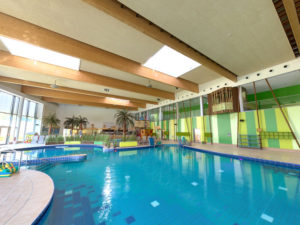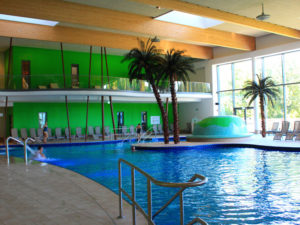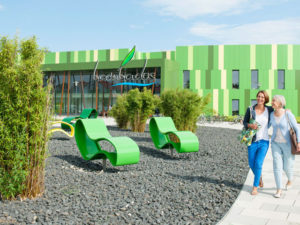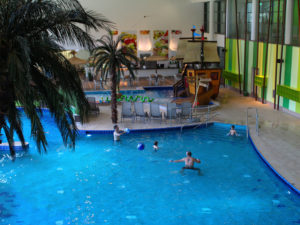The first passive house technology water recreation park significantly saves energy
The water recreation park “Bambados” built in the city of Bamberg, Germany, is the first […]
The water recreation park “Bambados” built in the city of Bamberg, Germany, is the first water park where passive house technologies have been used to ensure the necessary energy.
Owing to this technological solution, high thermal insulation and sealing of the premises is achieved. Such a system allows a high moisture content (up to 64%) to be maintained, without causing condensation.
The air exchange intended for user needs is divided into zones, and 11 different mechanical ventilation systems ensure this.
Both the heat and electricity producing biomass system and three gas condensing boilers provide thermal energy. It is expected that close monitoring and optimisation of the functioning of the systems could achieve a saving of approximately 60% electricity for ventilation purposes.
In general, this water park requires about 50% less thermal energy and 20% less electricity than other equivalent parks.
Currently there is continued monitoring of energy consumption, which confirms the assumptions made about the energy saving possibilities, and it is intended that in 2018 a full report will be summarised with regard to the energy savings achieved by optimising the systems used.
The Passive House Institute has provided its support for the creation of this project from the outset, and the project has received support from the German Federal Ministry for Economic Affairs and Energy. Total water park construction costs have amounted to approximately 32 million euros.
Equivalent energy savings using passive house technology have been achieved in the water recreation park of the German city of Lunen, which is the second project of such type in the world. While the third passive technology water park is planned in Exeter, the United Kingdom.
You can see a photo of the “Bambados” water recreation park below.




